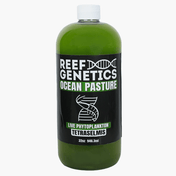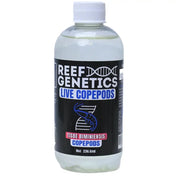If you’ve spent any time browsing reef aquarium forums or visiting your local fish store, chances are you’ve seen a rock flower anemone and thought, “Wow—look at those colors!” These little gems are some of the most eye-catching invertebrates you can add to a reef tank. They come in bold shades of orange, neon green, pink, and even rainbow patterns that look like something out of a coral photography book.
But here’s the best part: they’re easier to care for than most anemones. They don’t wander around your tank as much, they’re hardy, and they don’t demand high-end lighting or constant babying like some corals do. If you’re looking for something beautiful that won’t stress you out, the rock flower anemone checks all the boxes.
In this guide, I’ll break down everything you need to know about rock flower anemone care—tank setup, lighting, feeding, placement, and common mistakes. Whether you’re brand new to saltwater or a seasoned reef keeper, this article has you covered.
What Exactly Is a Rock Flower Anemone?
The scientific name is Phymanthus crucifer, but in the hobby, most people just call it a rock flower anemone or “rockflower” for short. They’re found in shallow waters in the Caribbean and parts of the Western Atlantic. Picture a sandy patch with bits of rubble and you’ll often find these anemones hanging out there, partially buried with their tentacles spread out like petals.
Why do people love them so much?
-
They’re colorful. Seriously, some morphs are so bright they just pop under blue lighting.
-
They’re hardy. Perfect for someone who doesn’t want the stress of a finicky coral.
-
They stay put (mostly). Unlike bubble-tip anemones that roam and sting your prized SPS, rock flowers usually find a spot and stick with it.
They’re sometimes marketed as flower corals because of their shape, and you’ll also see terms like ultra rock flower anemone when sellers describe premium color morphs.
Why They’re a Great Choice for Reef Tanks
There’s a lot to love about these anemones. First, they don’t require a massive tank—20 gallons and up is fine. Second, they don’t grow huge like carpet anemones, so they won’t take over your aquascape. And third, they’re considered one of the best beginner-friendly anemones because they don’t have extreme care requirements.
They also play nicely in mixed reef setups, provided you give them some personal space. Want to add a pop of color to your sand bed? Or create a little anemone garden with different morphs? Rock flowers make that easy without the stress of delicate coral care.
Rock Flower Anemone Care: Everything You Need to Know
Tank Requirements
Stability is key. Like most saltwater inverts, they hate big swings in water chemistry. Here’s what you should aim for:
- Tank Size: 20 gallons or larger. Bigger tanks give you more stability, which is always a plus.
- Temperature: 75–80°F.
- Salinity: 1.024–1.026 specific gravity.
- pH: Between 8.1 and 8.4.
Regular water changes and strong filtration will help maintain these conditions. A dirty tank will stress them out quickly, so keep up with your maintenance routine.
Lighting: How Much Is Enough?
Moderate to high lighting works best. Most hobbyists keep them under LEDs or T5s with a PAR in the 80–150 range. The good news is you don’t need blazing light like you would for some SPS corals. They adapt well, but don’t throw them under intense light all at once—bleaching is a real risk. Start low and ramp up slowly.
Water Flow
Think gentle, steady currents. Too much flow and they’ll let go and float around your tank, which no one wants. Too little and debris builds up, which isn’t great either. If you’ve got powerheads, aim them so the anemone sways gently but doesn’t fold over from force.
Placement Tips
Here’s where rock flower anemones really shine—they’re versatile. You can tuck them into a crevice in your rockwork or place them on a sandy bed. They’ll move a little until they find their sweet spot, but once they’re happy, they usually stay put.
One thing: don’t cram them next to other anemones or aggressive corals. They can sting, and while they’re not the most aggressive critters, you don’t want chemical warfare in your tank.
Feeding: How Often and What to Offer
Do you need to feed them? Technically, no. They have zooxanthellae (just like corals) and get energy from your tank lights. But if you want them to thrive and show off their best colors, feeding helps a lot.
What to feed:
- Mysis shrimp
- Brine shrimp
- Finely chopped seafood (like scallops or shrimp)
Use tongs and gently place the food near the mouth in the center. Once or twice a week is plenty. Overfeeding can mess with your water quality, so go easy.
Tank Mates: Who Plays Nice?
Good news: they’re pretty chill. Most reef-safe fish are fine, and they won’t go hunting like some predatory anemones. Just avoid fish that naturally eat anemones, like certain butterflyfish and big wrasses. Inverts like shrimp and snails are generally safe too.
Common Problems and How to Avoid Them
Even hardy anemones have their challenges. Here’s what to watch for:
- Bleaching: Often from too much light or a sudden spike in water quality issues.
- Floating Around: Usually a sign of unhappiness—check your flow or parameters.
-
Color Fading: Might mean it’s hungry or not getting enough light.
If something seems off, test your water first. Nine times out of ten, the issue comes down to unstable conditions.
Buying Rock Flower Anemones: What to Look For
When you’re shopping, here’s how to pick a healthy one:
- Bright colors with no signs of fading.
- A firm, closed mouth (a gaping mouth is a bad sign).
- No tears or damage to the body.
Common Questions
How big do they get?
Most max out at 2–4 inches, though some can reach 6 inches across.
Do they need sand?
Nope! They’re happy on sand or rock—your choice.
Do they host clownfish?
No, they’re not a hosting anemone. If that’s what you want, look into bubble-tip anemones instead.
How long do they live?
With good care, they can live for many years, even a decade.
Concluding Thoughts
Rock flower anemones are one of those rare reef tank additions that combine beauty with simplicity. They don’t ask for much beyond stable water, decent light, and an occasional snack. In return, you get a living splash of color that can transform your aquascape.
Whether you’re building your first reef or adding something special to an established tank, these anemones deserve a spot on your list. They’re hardy, stunning, and endlessly fascinating to watch.



















